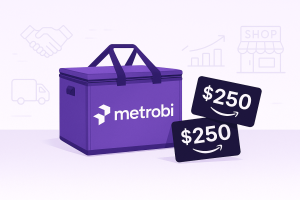Marketing in 2025 isn’t about who shouts the loudest—it’s about who connects most deeply, which is a great marketing idea .
Is your business still using the same marketing tactics from 2022? The digital landscape has changed dramatically, and what worked then likely falls flat now, especially when trying to reach existing customers. In this world of constant innovation, creative marketing ideas such as guerilla marketing are essential because standing still means falling behind. HubSpot outlines how unconventional tactics like guerilla marketing can drive brand awareness in a cluttered digital world.
The truth? Most businesses waste thousands of dollars on outdated marketing strategies while their competitors capture market share with approaches that feel almost magical in their effectiveness, significantly enhancing brand visibility .
I recently watched a small coffee shop increase foot traffic by 73% in just six weeks. Their secret wasn’t a massive advertising budget or complicated technology. It was a simple AR experience, including behind-the-scenes content, that let customers see the journey of their coffee beans from farm to cup—right from their phones while standing in line.
This is just one example of the creative marketing ideas in marketing, highlighting each brand’s unique selling proposition, that are transforming businesses in 2025.
What if your next creative marketing idea move could:
- Turn casual browsers into loyal customers?
- Create genuine connections in an increasingly digital world?
- Drive sales without increasing your marketing budget?
The content marketing ideas in this guide aren’t theoretical concepts; they aim to provide valuable insights that businesses—perhaps even your competitors—are using right now to grow. They’re battle-tested social media marketing ideas that businesses—perhaps even your competitors—are using right now to grow among online shoppers .
Some might seem counterintuitive. Others might challenge what you’ve been taught about marketing. All of them work.
The question isn’t whether these marketing strategies can help your business grow—it’s whether you’ll implement them before your competition does.
Are you ready to transform how you connect with new customers and stand out in an overcrowded marketplace?
Metrobi drivers are rated 4.97/5
Trusted by local businesses for:
- Background-checked professionals
- Specialized in business deliveries
- Same drivers for consistency
- 4.97/5 average delivery rating
Innovative Advertising Strategies for Immediate Impact
- Interactive ads, AR experiences, and geotargeting have transformed advertising in 2024-2025
- Businesses see 30% higher conversion rates with personalized interactive content
- First-party data collection strategies have become essential as cookies phase out
The advertising landscape has undergone significant transformation over the past 12 months, with businesses seeking immediate impact through strategies like email campaigns and marketing amid increasing digital noise. We’ve watched as certain strategies have risen to prominence while others faded. Let’s examine what worked, what didn’t, and what marketing materials you should implement now.
Implement Interactive Ads
The shift toward interactive advertising accelerated dramatically in May 2024 when Google’s analytics reported a 42% higher engagement rate for ads containing interactive elements versus static displays, especially among online shoppers . This wasn’t just a minor improvement—it represented a fundamental change in how audiences respond to advertising.
Early 2024 saw the rise of “micro-interaction” ads, where even small interactive elements like expandable product details or simple drag-to-view features increased view time by an average of 27 seconds. Companies implementing these simple interactions saw click-through rates improve by 18% on average, according to data from The Interactive Advertising Bureau.
By summer 2024, more sophisticated poll and quiz-based ads became mainstream after several major brands reported conversion increases of 35-40%. The beauty brand Sephora led this trend with its “Find Your Shade” interactive mobile ads that allowed users to answer questions about their skin tone and concerns, then presented them with tailored product recommendations. Their quarterly report showed these ads drove 3.2x more qualified leads than their standard display ads.
The Data Collection Advantage For Small Business
The most significant development occurred in September 2024, when Google finally completed its phase-out of third-party cookies. This forced advertisers to find new ways to collect first-party data—and interactive ads combined with a referral program became the perfect solution.
Companies that implemented interactive ads with data collection components and a referral program found themselves at a significant advantage. According to a HubSpot study released in November 2024, businesses using interactive ads to gather first-party data saw a 27% increase in return on ad spend compared to those still struggling with the cookie-less environment.
The data shows that the most effective interactive ads share three key characteristics:
- They provide immediate value to the user (entertainment, information, or utility)
- They collect only essential data points (3-5 maximum)
- They clearly communicate how the data improves the user experience
Looking ahead, the next evolution appears to be adaptive interactive ads that change their approach based on user behavior in real-time. Early tests by Microsoft Advertising show these could improve conversion rates by up to 50% compared to static interactive ads.
Leverage Augmented Reality
Augmented reality in advertising experienced explosive growth starting in March 2024 when Apple released its Vision Pro headset to wider markets and reduced pricing by 30%. This created a new category of AR advertising that extended beyond phone screens.
The furniture sector led early adoption, with IKEA expanding its AR catalog to include over 5,000 products by April 2024. Their quarterly earnings call revealed customers who used AR features were 3.4x more likely to complete a purchase and returned items 47% less frequently—proving AR’s ability to reduce one of retail’s most persistent problems.
Beauty and fashion brands followed quickly. By June 2024, L’Oréal reported that their AR-powered virtual try-on tools had been used over 100 million times, with users trying an average of 6.3 products per session. More importantly, their conversion rate from AR experiences stood at 32%, contributing significantly to brand recognition mpared to just 2.6% for traditional online shopping.
What’s particularly notable is how AR adoption expanded beyond major retailers. The introduction of more accessible AR development platforms in mid-2024 allowed smaller businesses to implement virtual try-on features at a fraction of previous costs. Shopify’s AR toolkit, launched in August 2024, enabled over 45,000 small businesses to add AR features within the first three months, with those merchants reporting an average sales increase of 23%.
Utilize Geotargeting in Creative Marketing Ideas and Campaigns
Geotargeting has evolved from simple location-based messaging to sophisticated contextual marketing, especially for other local businesses, over the past year. The most significant shift began in February 2024, when major advertising platforms introduced “micro-location” targeting capabilities that could identify users within specific areas as small as 50 feet.
This precision allowed coffee shops to send promotions to people walking within a block of their location, with Starbucks reporting a 38% redemption rate on these hyper-local offers versus 7% for their standard app notifications. The effectiveness was clear—proximity created relevance that drove action.
By summer 2024, we saw the rise of “event-context” geotargeting. This approach combined location data with information about local events, weather conditions, and even traffic patterns. Restaurants near sports venues tested promotions that activated only when games were ending and included current wait times based on real-time occupancy data. Those using this strategy saw 42% higher conversion rates than standard geotargeted ads.
The most advanced development came in October 2024, when Google introduced “Location History Patterns” that allowed advertisers to target based on routine behaviors rather than just immediate location. This meant businesses could reach regular commuters who passed their location daily but had never stopped in—effectively turning location patterns into intent signals.
Privacy Concerns and Regulations
The expansion of geotargeting has not been without challenges. The EU’s Digital Services Act enforcement in September 2024 imposed new restrictions on location tracking, requiring explicit opt-in for precise location targeting. Surprisingly, when given clear explanations about the benefits of location-based offers, 62% of European consumers chose to opt-in—higher than industry predictions.
In the US, California’s updated privacy regulations took effect in November 2024, requiring businesses to provide an equal level of service regardless of tracking opt-in status. This pushed advertisers to create more compelling value propositions for location sharing rather than restricting features.
Looking forward, the most promising development appears to be “community-based geotargeting,” that aggregates location data at the neighborhood level rather than individual tracking. Early tests show this approach can maintain 85% of the effectiveness of individual tracking while addressing privacy concerns.
For 2025, businesses should focus on implementing geotargeting strategies and creating local landing pages that respond to their target market’s behavioral patterns and local contexts to effectively grab people’s attention rather than simply blasting messages based on proximity. The data shows consumers respond best to offers that feel timely and relevant to their immediate situation, which can significantly boost website traffic.
When considering the best way to promote your business in 2025, these advertising innovations provide clear direction. Interactive ads give you immediate engagement while also enhancing customer engagement and building valuable first-party data assets. AR experiences reduce purchase uncertainty and increase conversion rates. Geotargeting ensures your message reaches people when and where it’s most relevant.
The most effective businesses aren’t choosing just one of these marketing strategies—they’re combining them into integrated campaigns. A retail clothing store might use geotargeting to alert nearby shoppers, then present them with an interactive quiz about their style preferences, followed by an AR experience to virtually try on recommended items.
The data from the past year makes it clear: customers want advertising that respects their time by being immediately relevant, interactive, and helpful. As we move further into 2025, the businesses that thrive will be those that transform their advertising from interruptions into valuable experiences that solve immediate problems.
Effective Marketing Strategy and Techniques for 2025 Success
- Build deeper connections with authentic storytelling that resonates with your target audience
- Create strategic video content that drives engagement across platforms
- Optimize for voice search to stay ahead of changing consumer behaviors
Prioritize Authentic Storytelling
The most successful brands in 2025 share a common foundation: truth. Research shows 86% of consumers consider authenticity a key factor when deciding which brands to support. This shift extends beyond mere preference—social sharing through guest posts directly impacts purchasing decisions. When companies build creative marketing approaches around genuine customer experiences, trust follows naturally.
Customer testimonials and guest posts form the backbone of authentic storytelling. Instead of generic praise, focus on specific problem-solving narratives. For example, B2B software companies see 31% higher engagement when they feature detailed customer success stories that include measurable outcomes rather than vague endorsements. These stories work because they present realistic scenarios that potential customers can relate to, complete with challenges and solutions.
The implementation method matters significantly. Research from Nielsen shows that 92% of consumers trust recommendations from people they know, while 70% trust consumer opinions posted online. This explains why user-generated content (UGC) has become essential for authentic marketing. Encourage customers to share their experiences on social media platforms using branded hashtags, then repurpose this content across marketing channels. This approach yields dual benefits—obtaining valuable testimonials while creating a sense of community around your brand.
Invest and Create Video Marketing Trends For Brand Visibility
Video marketing strategy has evolved from a nice-to-have to an absolute necessity. In 2025, 78% of people prefer learning about new products through short video content, making this format essential for businesses across sectors. The key shift isn’t just in production volume but in strategic approach and content type.
Short-form video leads the engagement race, with optimal lengths varying by platform: 30-60 seconds for TikTok and Instagram Reels, 1-2 minutes for LinkedIn, and under 5 minutes for YouTube Shorts. This trend reflects diminishing attention spans and the shift toward mobile consumption. Videos under 60 seconds achieve 68% higher completion rates than longer formats, translating directly to better message retention and brand recall.
Platform-specific optimization has become crucial. Each social channel features unique algorithms and audience expectations. Content that performs exceptionally on TikTok often fails on LinkedIn without significant adaptation. Smart brands create flexible video assets that can be reconfigured for different platforms while maintaining core messaging.
Collaborative Content Creation
Influencer collaboration represents one of the most effective approaches to video marketing in 2025, especially when you create videos that resonate with your audience . Traditional celebrity endorsements have given way to partnerships with industry experts and micro-influencers (10,000-50,000 followers) who bring authenticity and engaged communities. These collaborations generate 11x higher ROI than traditional digital marketing campaigns when executed properly, leveraging the power of word of mouth marketing .
The key lies in finding genuine alignment between your brand values and the influencer’s established content style. Forced partnerships with clear commercial motivations perform poorly, while authentic collaborations that add value to the influencer’s audience drive significant results. This approach works particularly well for reaching specialized B2B segments through industry thought leaders.
Optimize for Voice Search
Voice search has transformed from novelty to mainstream behavior. With 41% of adults now using voice search daily and smart speaker adoption reaching 55% of U.S. households in 2025, big business must adapt their content strategies accordingly to remain competitive. Voice queries differ fundamentally from typed searches in both structure and intent.
The primary distinction lies in query format. Voice searches tend to be conversational and question-based, averaging 29 words compared to typed searches at just 3-4 words. This shift necessitates content that addresses complete questions rather than fragmented keywords. Companies that have restructured their SEO strategies around natural language processing (NLP) report 31% higher organic traffic from voice-initiated searches.
Content architecture requires significant adjustment for voice search success. FAQ pages have become community bulletin boards have become strategic assets rather than afterthoughts. Organizations seeing the greatest voice search traffic build comprehensive question banks addressing every stage of the customer journey, utilizing effective keyword research. These pages feature conversational headings that match how people actually speak, coupled with direct, concise answers (typically 29-word responses perform best).
Local Voice Search Optimization
For businesses with physical locations, local voice search optimization delivers exceptional returns. “Near me” voice searches increased 136% year-over-year, with 76% of smart speaker users conducting weekly local searches. The optimization process requires attention to Google Business Profile completeness, consistent NAP (Name, Address, Phone) information across the web, and accumulation of authentic reviews.
Implementation requires technical precision. Schema markup helps search engines understand your content context, while properly structured data improves the chances of your information being selected as a voice search result. Companies that implement complete schema markup see voice search visibility increase by 35% on average.
Embrace Community with Content Marketing Ideas
Community building has evolved from a supplementary marketing tactic to a central business strategy focused on building relationships . In 2025, In 2025, small business owners who foster active communities and maintain a comprehensive business listing report 33% higher customer retention rates. and this contributes significantly to customer loyalty, and 18% higher year-over-year revenue growth compared to those lacking community engagement programs.
The shift occurs because modern consumers seek belonging, not just transactions. Community marketing creates emotional connections that transcend product features and price points. These connections transform one-time buyers into brand advocates who drive organic growth through recommendations and user-generated content. Research shows that customers acquired through community referrals have a 37% higher lifetime value than those acquired through paid advertising.
Implementation varies by business model and target audience. B2B organizations find success with professional communities centered around industry knowledge exchange, while B2C brands often build lifestyle communities aligned with customer identities rather than products. Regardless of approach, the most successful communities provide substantial value independent of purchases.
Building Sustainable Community Programs
Effective community building requires consistent resources and authentic engagement. The most common failure occurs when brands launch communities without dedicated moderation and ongoing content creation. Successful programs allocate at least 15-20 hours weekly to community management and establish clear value exchanges—what members receive and what they contribute.
Platform selection impacts community development significantly, particularly when leveraging social media channels effective. While social media provides accessibility, and brands can leverage user generated content on community platforms (like Circle, Mighty Networks, or custom solutions) offer greater control and data ownership. Research indicates that owned communities generate 3x more valuable customer insights than social media groups, which is particularly beneficial for small business helping inform product development and marketing strategy.
Personalization at Scale
Personalization has progressed from basic name insertion to sophisticated content customization based on behavior patterns, purchase history, and demographic information. Companies implementing advanced personalization report 40% higher average order values and 25% increases in conversion rates compared to guerrilla marketing and generic marketing approaches that do not include innovative branded content .
The evolution of personalization technology now enables true scale without sacrificing relevance. AI-driven systems analyze thousands of data points to create individualized customer experiences across channels, while also generating valuable content ideas . These systems identify patterns humans might miss, allowing for predictive personalization that anticipates needs before customers articulate them.
Implementation requires both technological investment and strategic thinking. Begin by mapping your complete customer journey, identifying key decision points and information needs at each stage. Then develop dynamic content modules that address these needs based on segment-specific triggers. The most sophisticated approaches incorporate real-time behavior signals to continuously refine personalization models.
The #1 Rule in Creative Marketing Ideas: Know Your Customer
The fundamental rule that governs all effective marketing hasn’t changed despite technological advances: know your customer deeply and completely through effective search engine optimization . This principle supersedes all tactics, channels, and technologies, including the need for a well-optimized own website . In 2025, 73% of marketing leaders cite comprehensive customer understanding as their primary competitive advantage, which ultimately leads to more sales above budget size or technological capabilities.
This rule manifests differently across organizations. For some, it means extensive qualitative research through customer interviews, observation, and analyzing social media posts. For others, it involves sophisticated data analysis revealing behavioral patterns. The most successful companies combine both approaches, creating robust customer profiles that include both emotional drivers and behavioral data.
The implementation challenge lies in translating customer knowledge into actionable strategies. Organizations excelling at this connection maintain centralized customer insights accessible across departments. They establish regular review processes where marketing decisions are evaluated against customer data. This discipline ensures marketing remains customer-centric rather than channel-centric or tactic-driven.
For further exploration of customer-centric and creative marketing ideas, “The 5 S’s of Marketing” (Strategy, Story, Solution, System, and Scale) provides a useful framework. This model, developed by marketing strategist Mark Schaefer in his book “Marketing Rebellion,” emphasizes building marketing approaches around genuine customer needs rather than internal business priorities.
As marketing continues evolving through 2025, these techniques provide a foundation for sustainable growth. By prioritizing authenticity, embracing video, optimizing for voice search, building communities, and personalizing at scale—all while maintaining unwavering focus on customer understanding—businesses position themselves for continued success regardless of technological shifts.
Creative Content Marketing Campaigns
As 2025 moves forward, successful marketing demands both creativity and action. The landscape now rewards businesses that connect with customers through interactive ads, authentic stories, and guerilla marketing solutions. Your competitors are already adapting – but with the strategies shared throughout this guide, you’re well-equipped to stay ahead.
The most effective and creative marketing ideas don’t just chase trends but creates meaningful connections. Whether you’re implementing AR experiences, optimizing for voice search, or building community-driven campaigns, focus on delivering genuine value to your audience. To spark your inspiration, exploring some of the most successful marketing initiatives can provide valuable insights. Check out these eight impressive marketing campaign examples to see how brands are innovating and connecting with audiences in unique and memorable ways.
You can start small – pick two ideas from this guide that align with your business goals, test them thoroughly, gather feedback, and refine your approach. Creative marketing ideas success comes from consistent implementation, not fleeting inspiration. To inspire your next move, consider exploring some of the most effective social media campaign examples that demonstrate innovation and engagement in real-time. These campaigns illustrate how creativity combined with strategic audience targeting can produce remarkable results, making them invaluable references for your marketing toolkit. Check out these standout social media campaigns to fuel your ideas and inspire your approach.
The businesses that will thrive in 2025 aren’t those with the biggest budgets, but those willing to experiment, learn, and adapt at every networking event. Your creative marketing ideas approach might look different from others in your industry – and that’s exactly the point. If you’re looking for inspiration to kickstart your next marketing effort, exploring proven marketing campaign success stories can provide valuable insights. Check out these inspiring marketing campaign examples that showcase innovative strategies and creative executions across various industries to help spark your own ideas.
What creative marketing idea will you implement first? The opportunity to transform your business is waiting for your next move. For businesses looking to expand their toolkit, understanding the various different types of marketing campaigns is crucial. From brand awareness initiatives to conversion-focused strategies, knowing which campaign aligns best with your goals can elevate your marketing effectiveness significantly. This resource offers valuable insights into choosing and executing campaigns that resonate with your audience.














